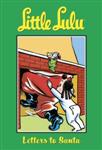Interesting post on the faculty blog of the University of Chicago Law School, by professor Doug Lichtman, that argues that the end of DRM would be disastrous for the music industry and music lovers. He suggests that without DRM, the industry will have no incentive to invest in music or will develop some other draconian response to piracy, such as streaming music to proprietary players. He also argues that improvements in labeling law or changes to the law to prevent the use of DRM as draconian as Sony’s would backfire, as this would lead to legislating over what types of DRM are permissible.
It’s good to see someone even try to argue the value of DRM after the whole Sony rootkit fiasco, but in this case Professor Lichtman has it wrong.
First, as Doug Lay points out in the comments, imagining the major labels moving to supporting only a single proprietary player leads to some interesting speculative schadenfreude. Certainly it’s easy to imagine the major labels continuing their downward spirals by fragmenting the playback market and alienating their channel. But just because the solution to come might be further detrimental to the labels’ interests is no reason to keep an antipiracy solution that has been proven harmful.
Second, Professor Lichtman suggests that the law needs not only to require better labeling for DRM but also to identify what is and is not allowed:
DRM of the sort adopted by SonyBMG might similarly be so bad as to beimpermissible. But then we need to say more about what forms of DRMwould be permissible, just as we similarly today allow shopkeepers toput locks on their doors, call the police in the event of a burglary,and so on.
If I’m not mistaken, there are a few lawsuits out there that point out ways in which Sony BMG’s DRM is in violation of existing laws against spyware, computer fraud, false or misleading statements, trespass, false advertising, unauthorized computer tampering, and other generally consumer hostile acts. I think this point of Professor Lichtman’s is a red herring. As Doug Lay points out, we don’t need new laws, we need Sony to be punished for violating the laws they’ve already done. In fact, I’m not sure I’d say that legislation against DRM is needed at this point even after this case, and perhaps on this point I do agree with Professor Lichtman, though for different reasons. I think we still need to see what the market, competitive pressures, and general customer awareness will do to address the labeling problem, and in the meantime the fallout from lawsuits will hopefully force Sony BMG and other labels to reconsider their choices.
Finally, Professor Lichtman assumes that the major labels’ investment in music somehow creates value for the musician and the customer. I’m not going to comment except to point out that the list of XCP infected discs contained albums by Celine Dion and Our Lady Peace. And I’m not sure how anyone could construe putting XCP on discs of reissued material by Dexter Gordon, Louis Armstrong, Art Blakey, Shel Silverstein, Horace Silver, Gerry Mulligan, or Dion, all on the XCP list, as constituting protecting an ongoing investment in music.
(Originally posted on the Sony Boycott blog. I don’t normally crosspost material like this except for my music reviews, but thought there might be some readers here who aren’t following the Boycott blog who might find this discussion interesting.)

